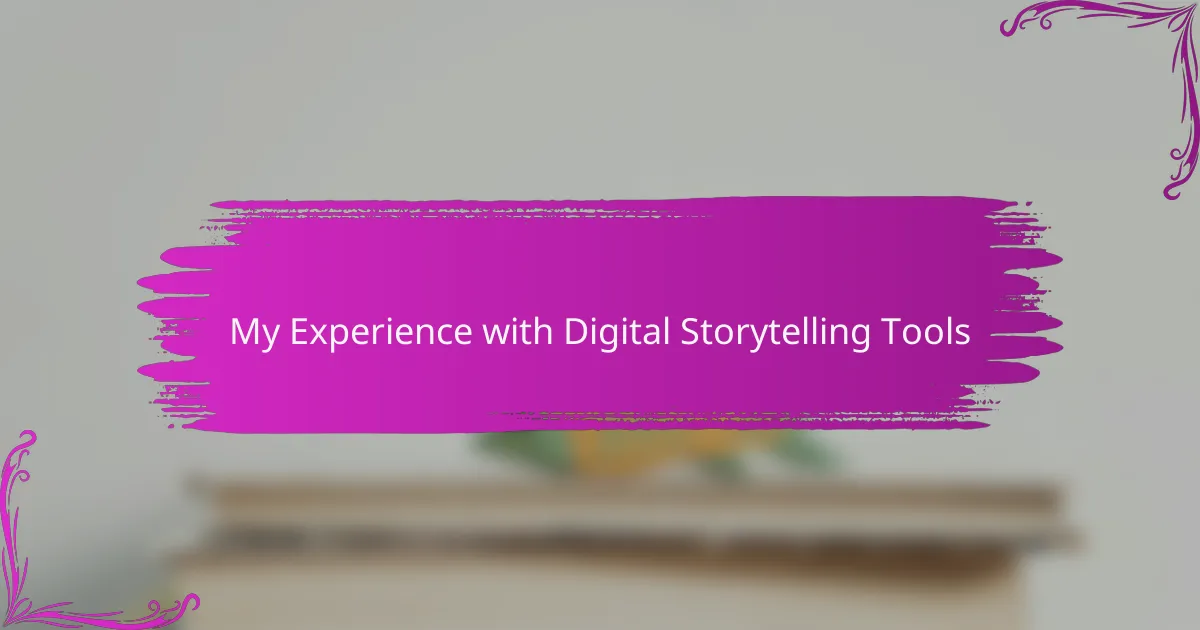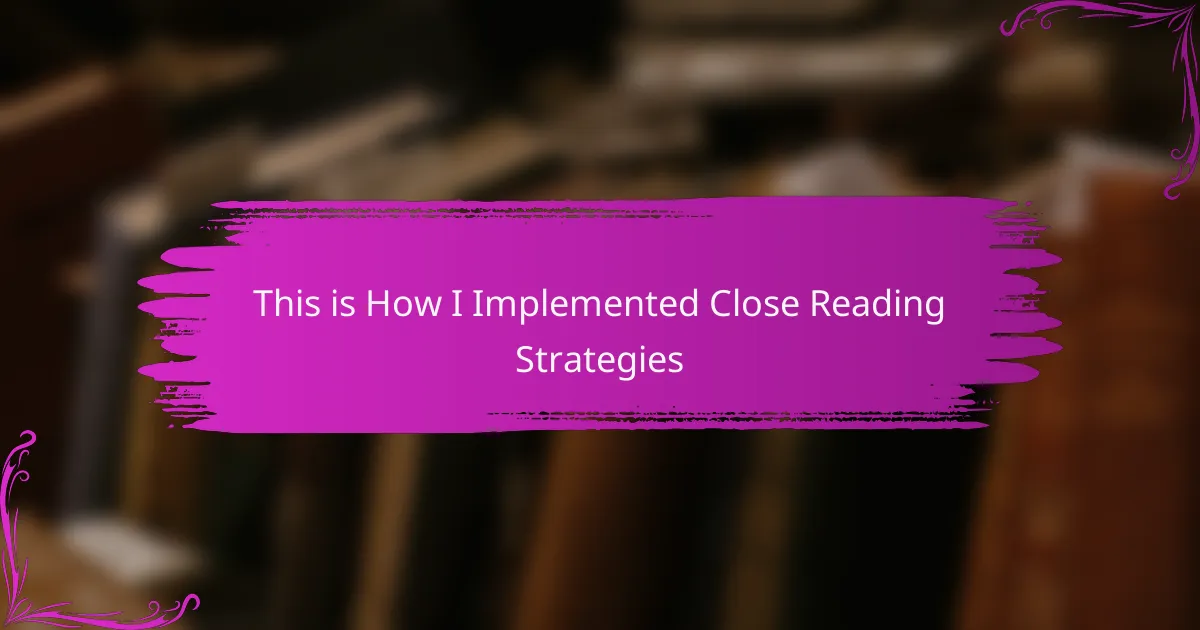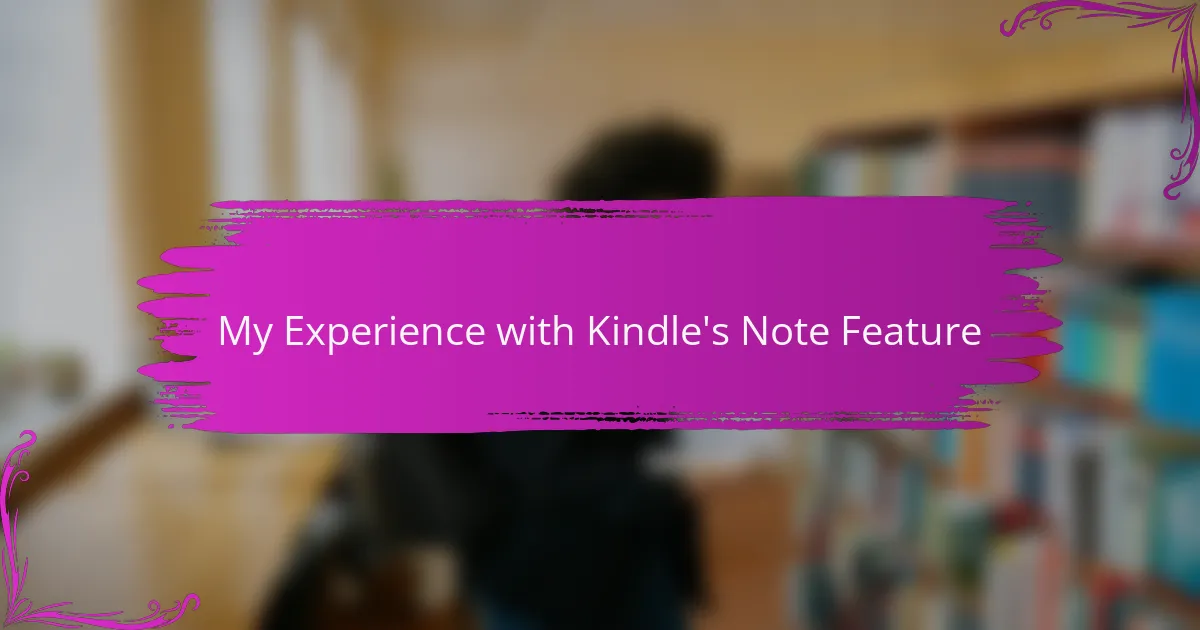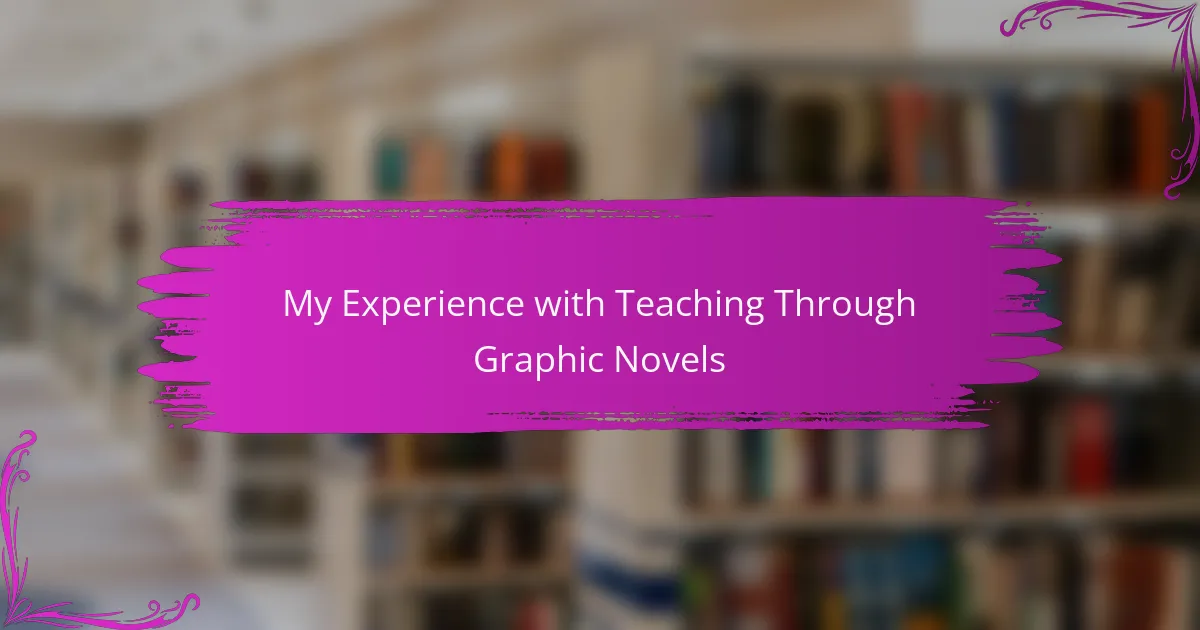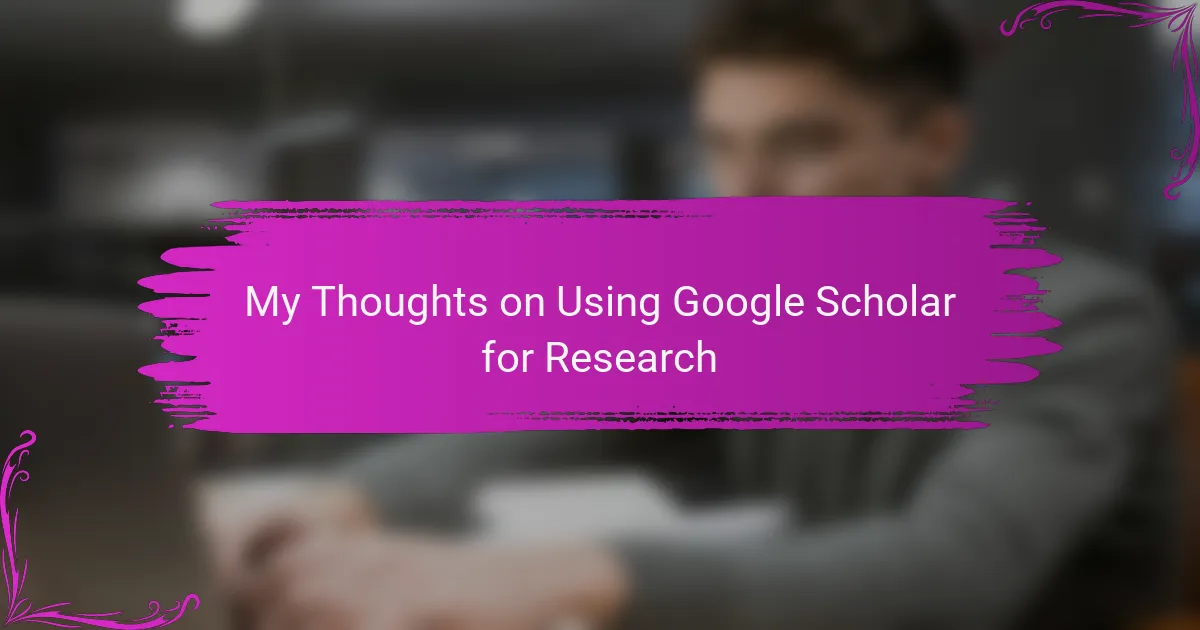Key takeaways
- Digital storytelling combines multimedia elements, enhancing engagement and emotional impact compared to traditional storytelling.
- Incorporating digital storytelling in literature education fosters creativity, critical thinking, and prepares students for a visually-oriented communication landscape.
- Popular tools like Storybird, Adobe Spark, and WeVideo offer unique features that support diverse storytelling approaches and collaborative learning experiences.
- Collaboration through digital tools enriches narratives, encourages diverse perspectives, and enhances technical skills essential for the future.
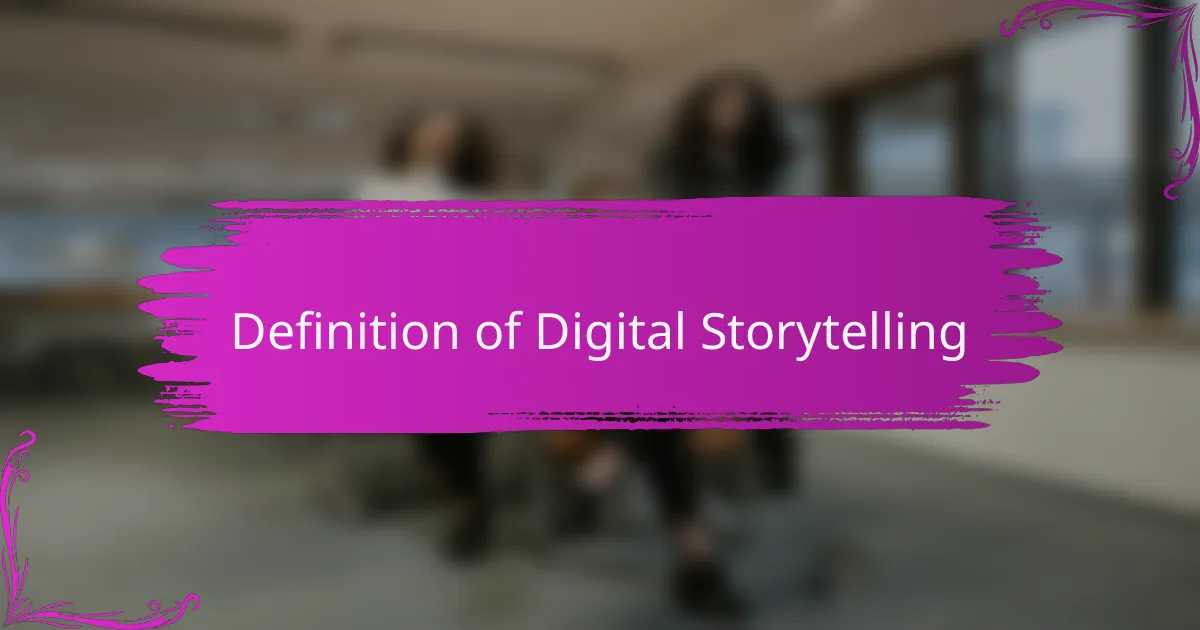
Definition of Digital Storytelling
Digital storytelling is a captivating way to share narratives through various multimedia formats, incorporating text, images, audio, and video. In my experience, it bridges the gap between traditional storytelling and modern technology, allowing for a richer, more interactive experience. I often think of it as a canvas where creativity meets technology, making stories not just told but felt.
What I find particularly engaging about digital storytelling is its accessibility. Everyone can tell their story; whether through a short video or a blog post, it provides a platform for voices that often go unheard. This medium truly transforms the process of storytelling into an immersive experience, one that can evoke emotions in ways that static text cannot.
Here’s a comparison of traditional storytelling and digital storytelling:
| Aspect | Traditional Storytelling | Digital Storytelling |
|---|---|---|
| Medium | Written or oral | Multimedia (text, images, audio, video) |
| Interactivity | Passive engagement | Active engagement (users can interact) |
| Accessibility | Limited to certain audiences | Accessible to a wider audience, including various abilities |
| Emotional Impact | Text-based emotional connection | Multi-sensory emotional experience |
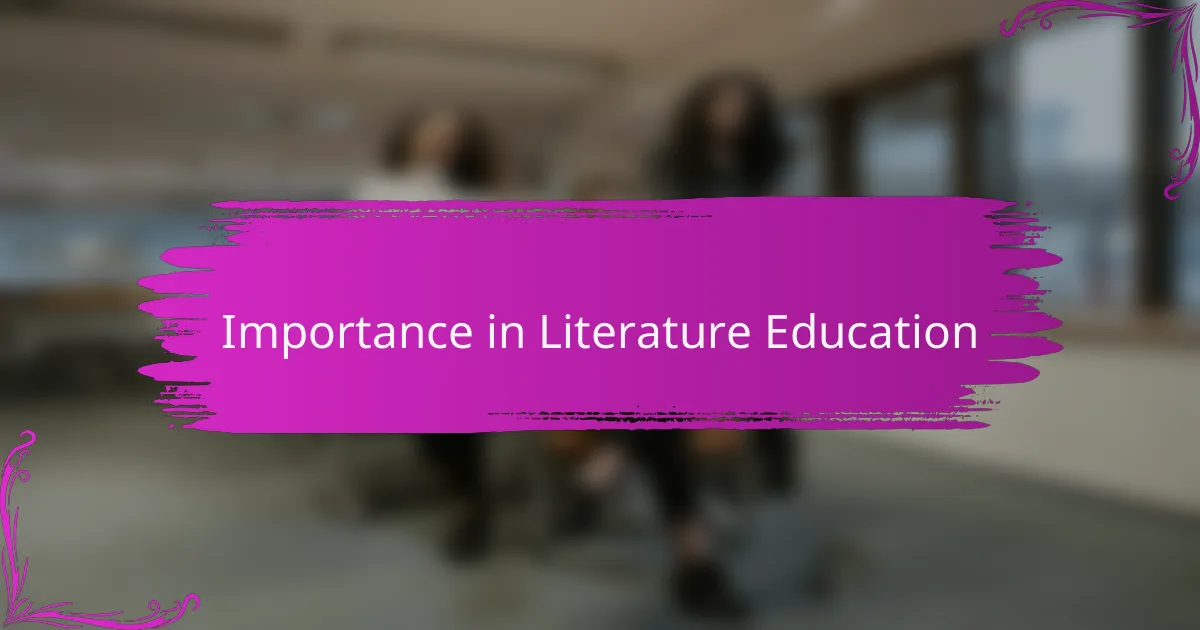
Importance in Literature Education
Incorporating digital storytelling tools into literature education is vital for fostering deeper engagement with texts. I remember my first encounter with a digital storytelling project; it brought an entire novel to life through audio clips and visuals. Suddenly, characters felt more real, and their conflicts resonated on a personal level. Isn’t it fascinating how a simple shift in presentation can unlock new layers of understanding?
Moreover, digital storytelling promotes creativity and critical thinking, essential skills for any literature student. When I encouraged my students to create their own digital stories based on their readings, I was amazed at how they interpreted themes and characters in unique ways. This not only made literature feel more relevant but also empowered them to express their perspectives, which is crucial in a world that values diverse voices.
Additionally, these tools prepare students for the demands of the digital age, where communication is increasingly visual and multimedia-oriented. Reflecting on my own journey, I realize how these skills have broadened my ability to communicate complex ideas effectively. Isn’t that what we all strive for in education—equipping our students with the tools they need to thrive in an ever-evolving landscape?
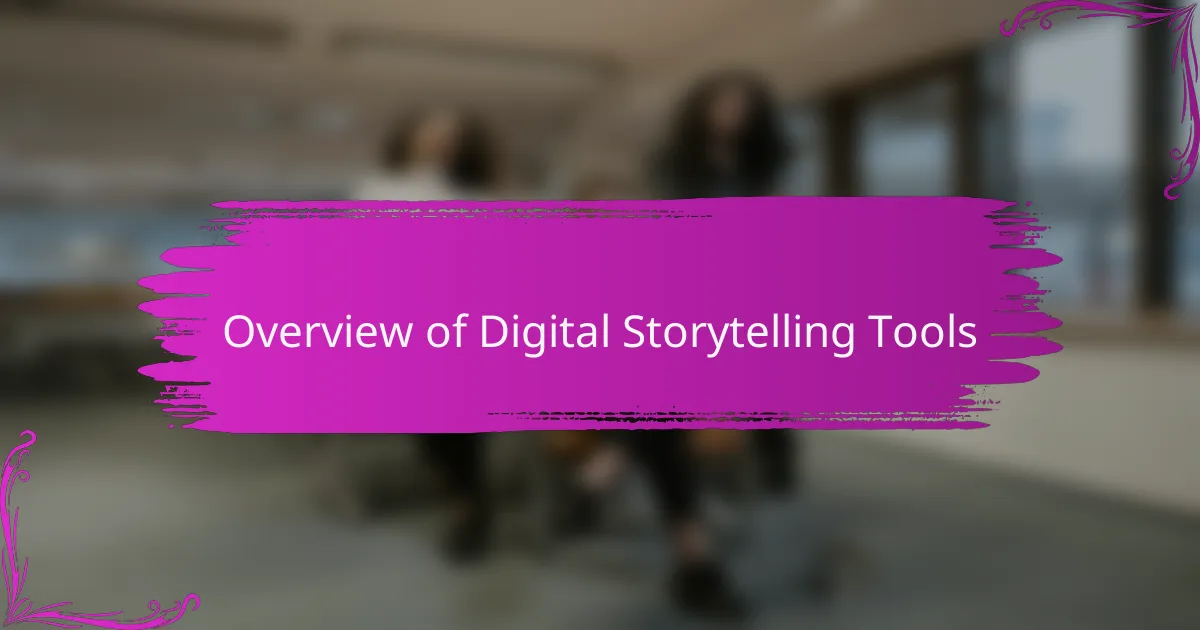
Overview of Digital Storytelling Tools
Digital storytelling tools have revolutionized the way we share narratives and connect with audiences. From my experience, these tools allow for creativity and expression in a format that combines visuals, audio, and text, making storytelling more dynamic and engaging. I’ve often found them invaluable in educational settings, where students can explore their creativity and enhance their understanding of literature.
When I first used one of these tools in a classroom setting, I noticed how excited my students became. They were no longer just passive recipients of information but active creators of their own stories. Seeing their engagement transform the learning environment was truly remarkable.
Here’s a quick comparison of some popular digital storytelling tools that I find particularly effective:
| Tool | Features |
|---|---|
| Storybird | Illustrated stories, collaboration, and publishing options |
| Adobe Spark | Video and web page creation, a variety of templates |
| WeVideo | Video editing, cloud storage, and music library |

Comparing Popular Digital Tools
When comparing popular digital storytelling tools, I find each one offers something unique. For instance, Storybird allows users to craft illustrated tales, which I believe is fantastic for younger audiences or those who struggle with writing. It sparks a sense of wonder as images inspire the narrative flow—doesn’t it feel like a storybook waiting to be created?
On the other hand, Adobe Spark is a heavyweight in terms of versatility. I recall using it to create a multimedia presentation for a literature class project. The variety of templates and the seamless integration of video and text made storytelling feel professional and polished. It’s fascinating how the right tool can elevate not just the content but also the creator’s confidence.
WeVideo has also carved a niche for itself with its user-friendly video editing features. I remember watching my students transform raw footage into compelling stories with a score of music, all while utilizing cloud storage for their projects. It made me wonder—how would their storytelling evolve if they had even more access to these tools? The potential seems limitless, and I feel excited to see where their creativity takes them next.
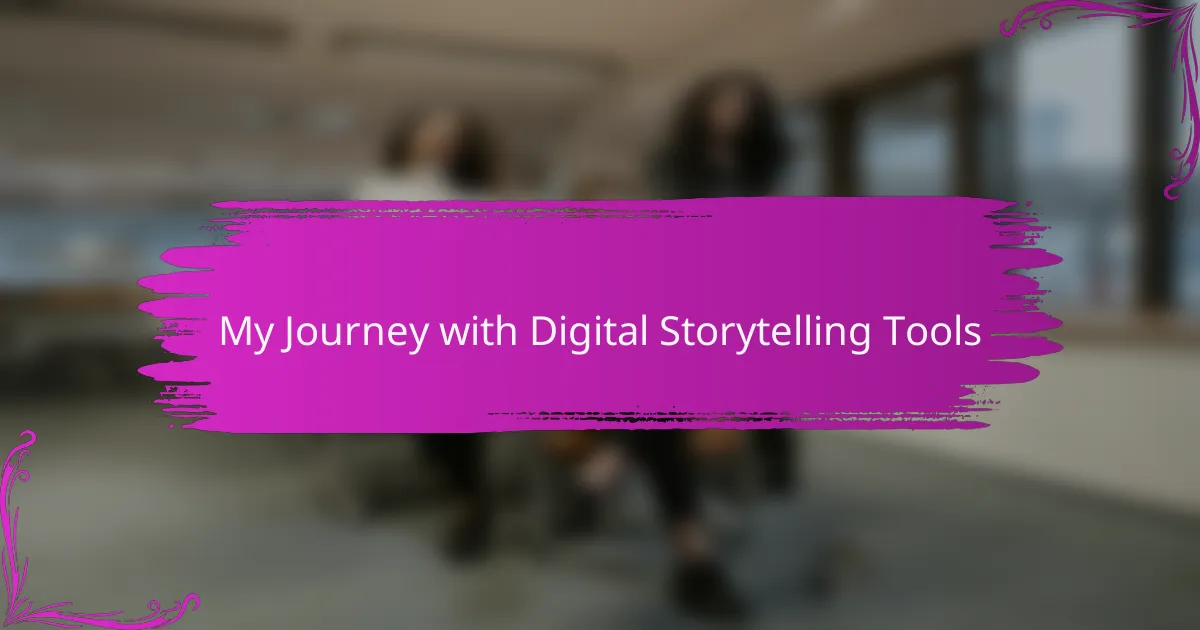
My Journey with Digital Storytelling Tools
My journey with digital storytelling tools has been nothing short of enlightening. I still vividly recall my first attempt using a tool for a class project. The thrill of combining visuals, audio, and text to create a narrative was exhilarating. It made me realize how powerful storytelling can be when we incorporate multiple senses. Have you ever felt the rush of bringing a story to life in a way that feels almost magical? It’s a unique experience that truly alters your perception of the narrative.
As I continued to explore different digital tools, I began to appreciate how they foster collaboration. I remember facilitating a group project where students worked together using these platforms to share their stories. The synergy was incredible, and students who typically shied away from speaking out felt empowered to share their thoughts. Seeing them connect and support each other was a reminder of how these tools don’t just serve as technological resources; they enhance the social experience of storytelling.
Looking back, I understand that my own storytelling skills have evolved alongside my use of these digital tools. Each project I undertook allowed me to experiment and learn something new, be it in narrative structure or technological skills. How often do we get to see our progress reflected in our work? It’s a rewarding aspect of digital storytelling that makes me eager to continue refining my craft.
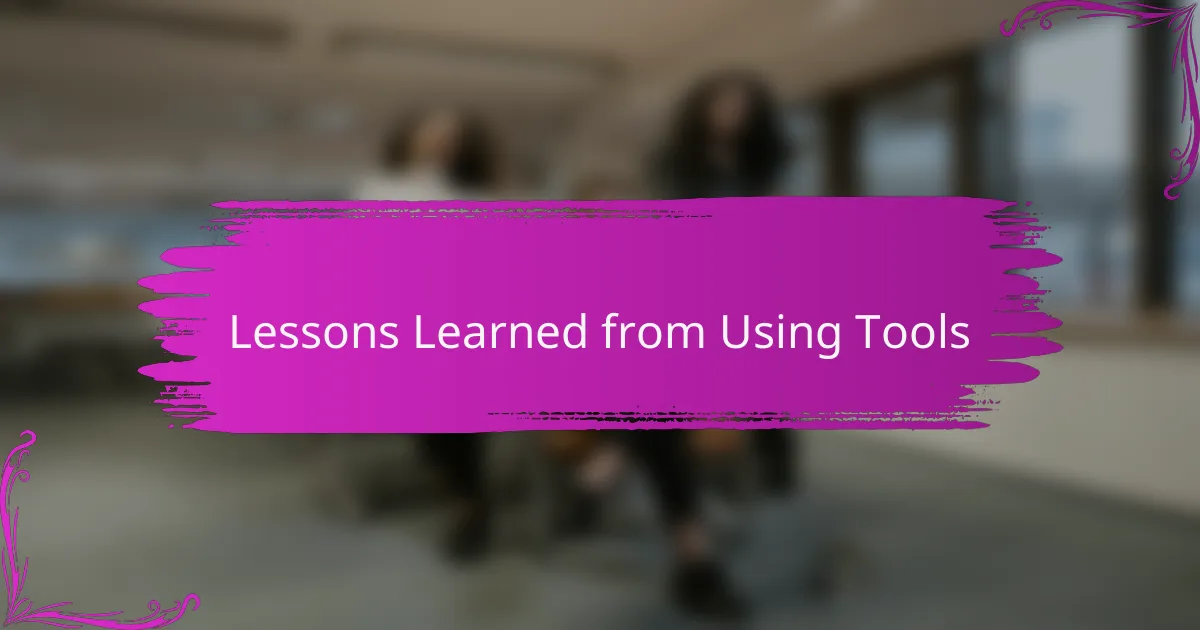
Lessons Learned from Using Tools
Using digital storytelling tools has profoundly changed my approach to literature. One of the most significant lessons I’ve learned is the power of visual elements in enhancing narrative. I remember creating a simple story using an animation tool and witnessing how the vivid colors and movement breathed life into the text. The joy that came from sharing it with my peers was immeasurable, highlighting how visuals can evoke emotions and capture attention in ways words sometimes cannot.
Another important lesson revolves around collaboration. When I collaborated with classmates on a storytelling project, we explored diverse perspectives that enriched our narrative. It was eye-opening to see how different backgrounds shaped our stories and made them more relatable. Here’s what I’ve learned through my experiences:
- Engagement: Visual storytelling invites deeper audience participation.
- Creativity: Tools encourage exploration of innovative formats like videos and animations.
- Collaboration: Working with others often leads to richer stories and shared learning.
- Feedback: Real-time input from peers improves narrative development.
- Technical Skills: Using these tools enhances digital literacy, preparing students for the future.
